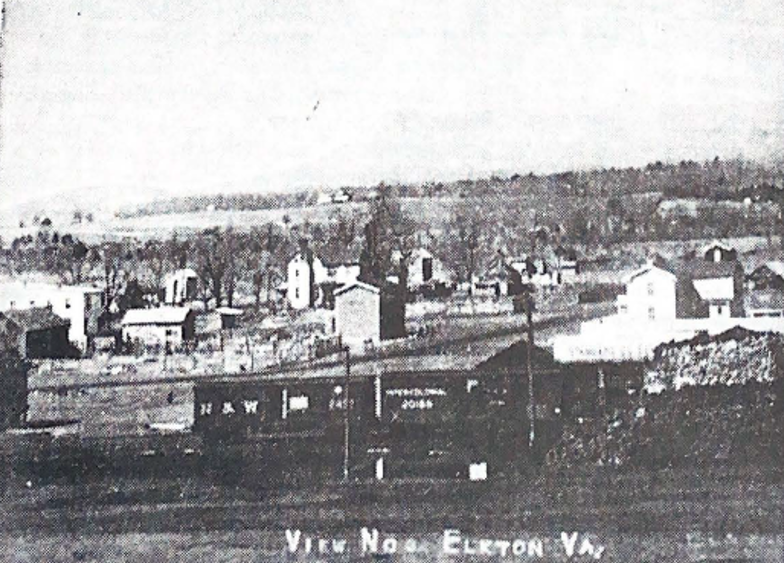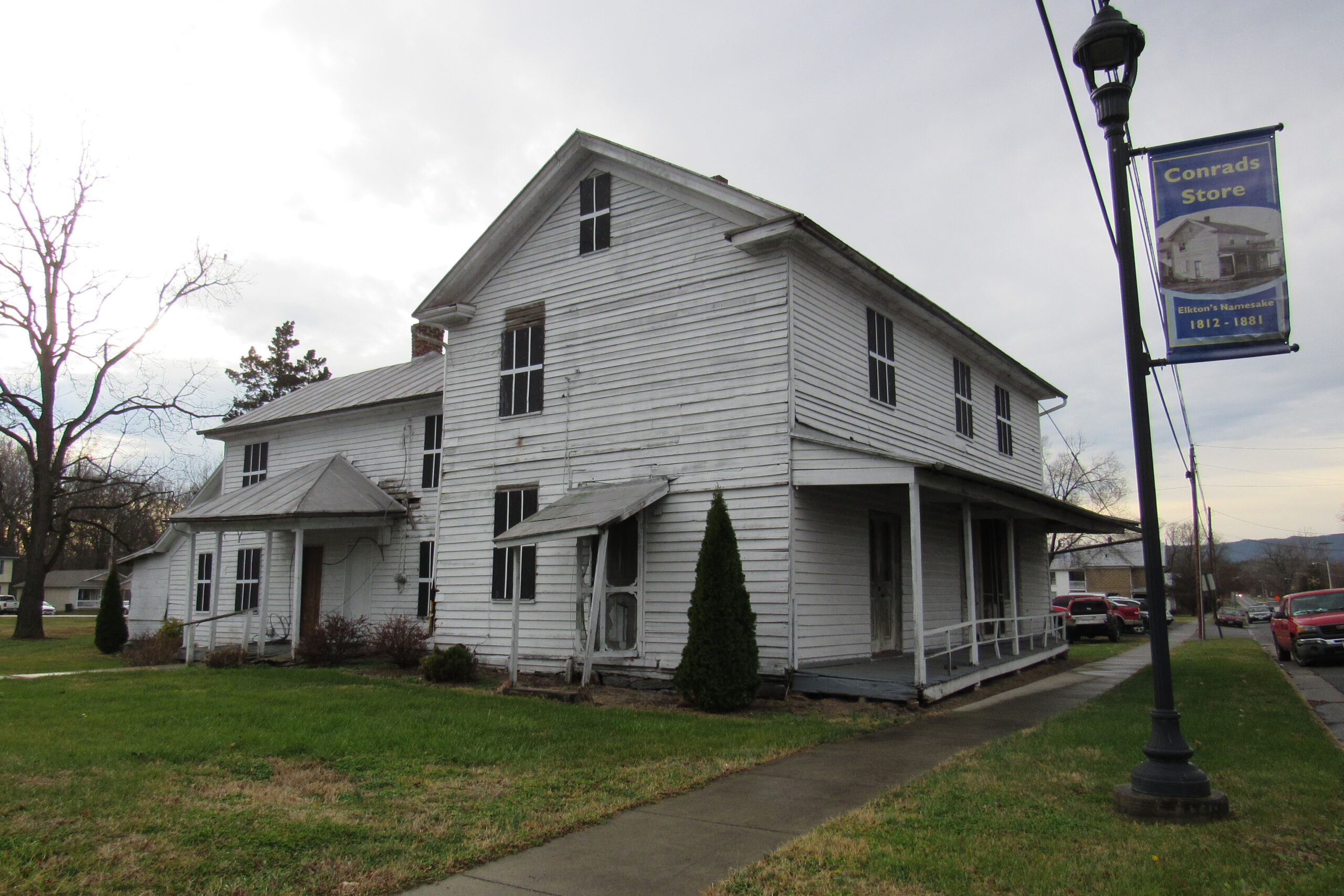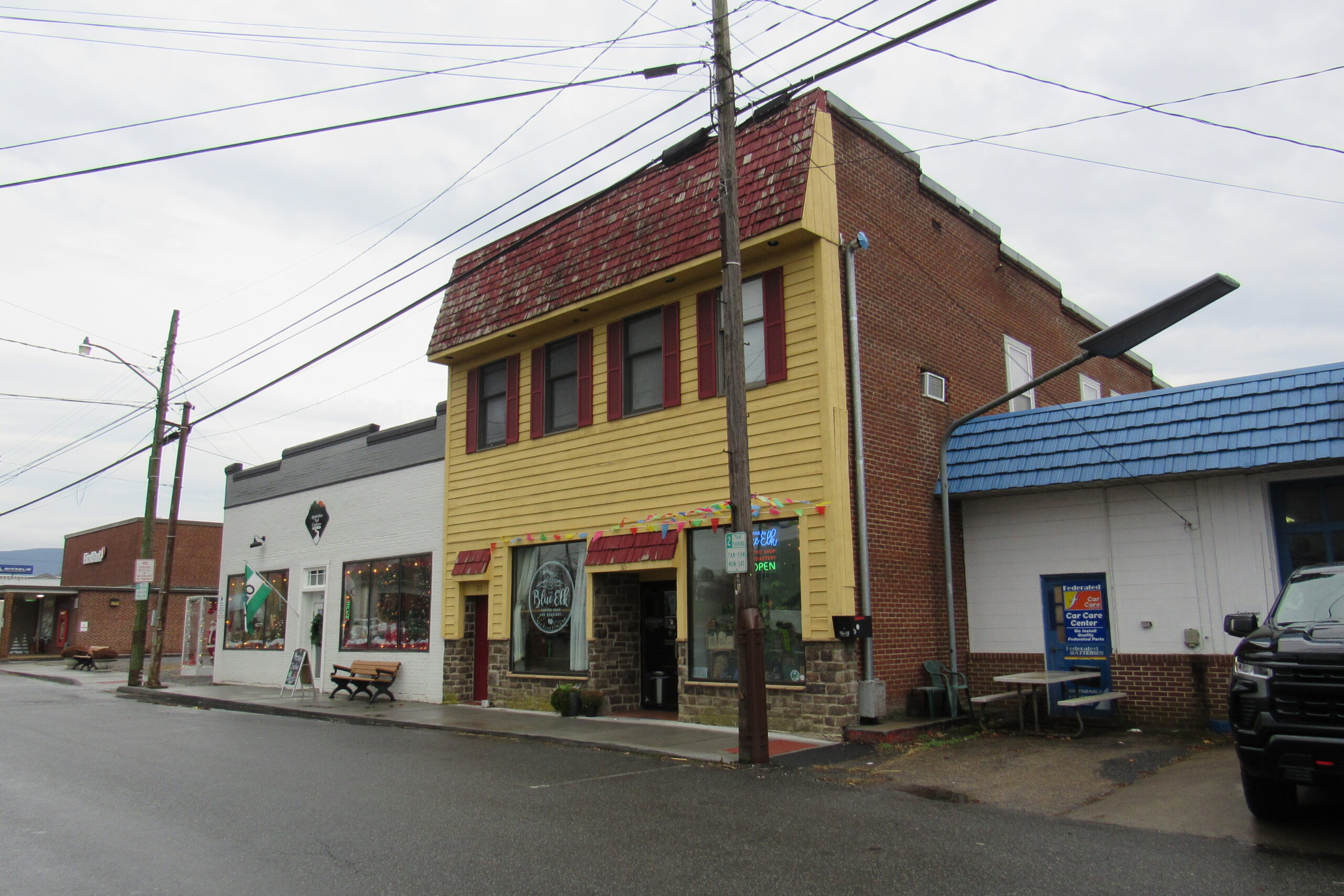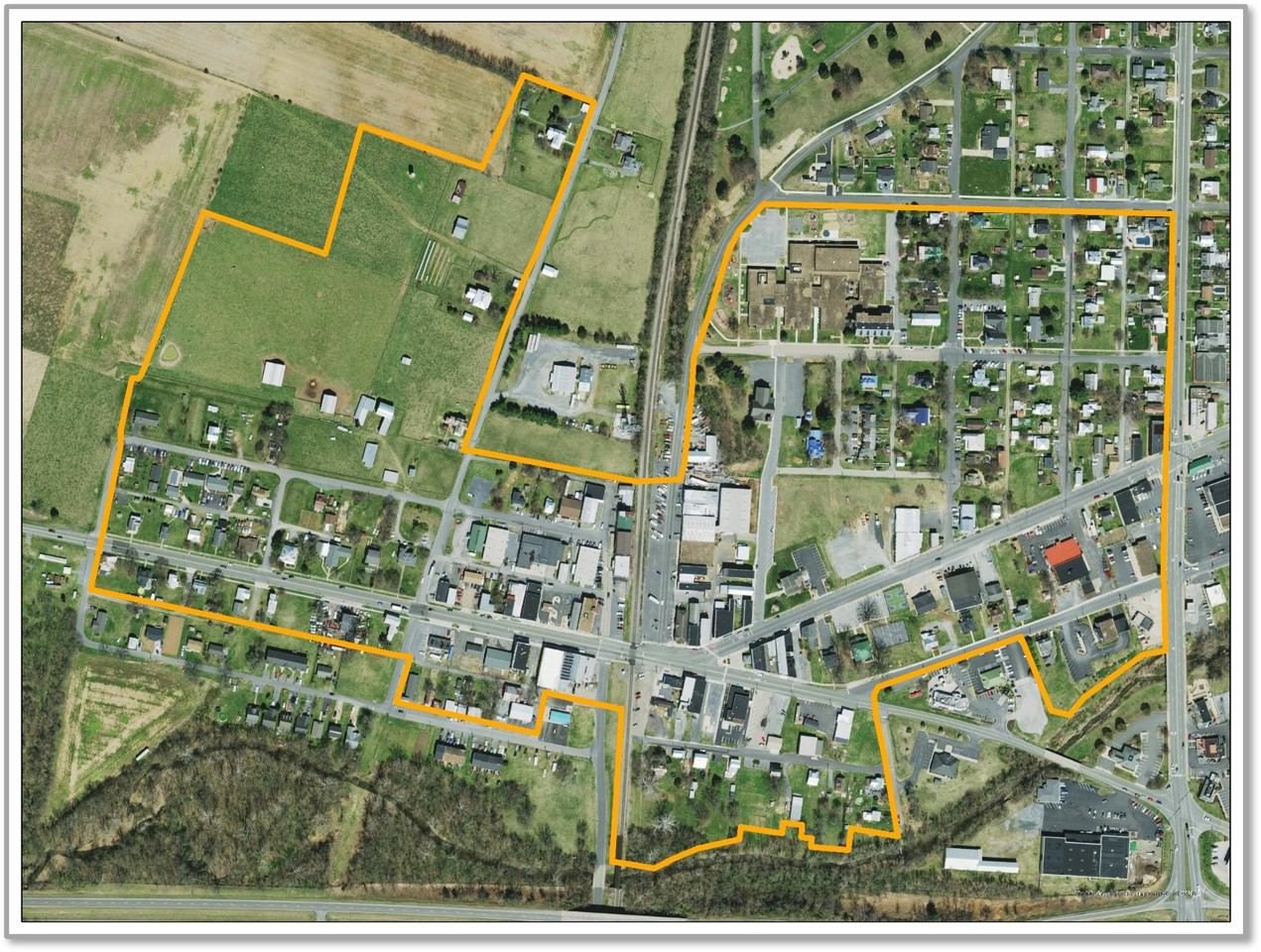By Sarah Rodriguez, Isabella Gordineer, and Adriana Moss
Nestled in between Massanutten, Hanse, Dean, and Hasselback Mountains in the Shenandoah Valley is a well-preserved historic mountain town called Elkton. Located in Rockingham County, Virginia, Elkton’s historic value has been recognized for years. In 2022, the Virginia Department of Historic Resources (DHR) and the Town of Elkton embarked on an initiative to get this significance recognized. They employed Dovetail Cultural Resource Group (Dovetail) to help author a National Register of Historic Places (NRHP) nomination.
What would become Elkton was first occupied by European-Americans in the early nineteenth century, when it was informally established as a crossroad town (Photo 1). These early residents settled in this area due to its proximity to the Shenandoah River. One of the river’s tributaries, Elk Run, powered a mill and a tannery in the area frequented by the new settlers, though these buildings are no longer standing. This early occupation period is represented today by Conrad’s Store, located at the current intersection of Shenandoah Avenue and West Spotswood Trail (Photo 2). Built around 1816, the store acted as a hub for the community as a store, meeting place, polling location, and post office. Another visible vestige of this early era is nearby Wirt Street, a mostly intact and early example of a combined residential and commercial area established before the incorporation of the town (Photo 3). The only other building dating to the first half of the nineteenth century is the circa 1840 Dr. Simeon B. Jennings House, which was built in the Italianate style and presently serves as Elkton’s Town Hall. Other houses built before the town’s incorporation are larger in size that exhibit formal architectural styles and complex construction materials representing the Queen Anne and Folk Victorian styles.

Photo 1: Elkton Looking East From Railroad Track, 1908. Photo featured in R.B. Hutton’s The History of Elkton (1976).

Photo 2: Conrad’s Store, 501 West Spotswood Trail. Photo by Dovetail Cultural Resource Group.

Photo 3: West Spotswood Trail Streetscape, 313–317 West Spotswood Trail. Photo by Dovetail Cultural Resource Group.
Elkton experienced the most change with the arrival of the Shenandoah Valley Railroad in the 1860s. This rail line brought new people, resources, and ideas to the area, which resulted in the growth of Elkton. The town was formally incorporated in 1890. A.G. Walker, a civil and topographical engineer, laid out the town’s grid and subdivision of plots in 1890 (Photo 4). How the town developed in reality is different from this idealized map, in part due to the consolidation and combination of some lots into larger parcels, the expansion of the town due to roadway construction in the early twentieth century, and other improvements.
This growth pattern was clearly evident during Dovetail’s survey. Much of what was constructed at the turn of the twentieth century comprises the majority of the current Elkton Historic District. Most of the resources in the area are commercial block stores and single-family dwellings, but the area also includes two churches, one school, and two farm complexes dating to the late nineteenth century. The modest examples of architectural styles that were popular at this time can be seen along many of the town’s streets. As rail service eventually started to decline in the late-twentieth century and Route 33 was built allowing road traffic to bypass Elkton, the town’s growth slowed, thus preserving the integrity of the town’s core. The landscape of the historic district has remained relatively unchanged since the 1970s. In total, Dovetail surveyed 288 resources including buildings, structures, and objects constructed in the nineteenth and twentieth centuries. Nearly a quarter of surveyed resources are single-family dwelling constructed but there are a number of commercial buildings within the district including the oldest resource, Conrad’s Store.
Based on studies by the DHR, the Town, and Dovetail, the district was found to be significant for its historical associations with important transportation and commerce trends in the Shenandoah Valley and as an example of a mountain crossroads town representing development patterns associated with early European-American settlement with further growth and development due to the arrival of the Shenandoah Valley Railroad. It is also notable for its commercial and residential architecture, specifically reflecting vernacular examples of trends during the late-nineteenth- and early-twentieth centuries with commercial and residential architecture exemplifying popular Romantic and Victorian-era styles. Vernacular buildings are also prevalent throughout the district and include one- and two-part block and false-front commercial buildings, as well as three-bay and five-bay I-house, Folk Victorian-style vernacular dwellings. Twentieth-century, empty lots were infilled, and older buildings were replaced with Moderne, Classical Revival, Colonial Revival, Minimal Traditional, bungalow, and American Foursquare buildings. As such, the architectural significance of the Elkton Historic District is closely tied to the residential and commercial growth the town experienced from about 1816 through 1975.

Photo 4: Historic Map of Elkton, 1890. Map by A.G. Walker of the Elkton Improvement Company.
As part of the nomination process, valuable information and sources were shared by the community of Elkton through public engagement particularly during public meetings and the survey. Through these efforts, the district was successfully listed in the Virginia Landmarks Register in September 2023 and the NRHP in October 2023 (Photo 5). Kudos to the Town of Elkton for recognizing the importance of their built resources and the DHR for being an incredible preservation partner to many Virginia localities!

Photo 5: Elkton Historic District Boundaries, encompassing approximately 103 acres. Map from Google.
References
Barni, Kevin, and Dan Dilks
2023 National Register of Historic Places Form, Elkton Historic District, Elkton, Virginia. Dovetail Cultural Resource Group, Fredericksburg, Virginia. Electronic document, https://www.dhr.virginia.gov/historic-registers/216-5097/, accessed February 2024.
Google
2023 Google Earth [Computer Program], Historic Aerial Image. Original Database: Commonwealth Virginia. Electronic document, http://www.google.com/earth/ download/ge/agree, accessed June 2023.
Hutton, R.B.
1976 The History of Elkton: Bicentennial Edition. The Elkton Bicentennial Community, Elkton, Virginia.
Shenandoah Valley Railroad, LLC
n.d. History. Electronic Document, http://www.svrr-llc.com/history.html, accessed January 2024.
Walker, A.G.
1890 Map of Elkton, Rockingham County, Virginia. Luray, Virginia. Electronic Document, https://www.raremaps.com/gallery/detail/23495/map-of-elkton-rockingham-county-virginia-1890-amiss-elkton-improvement-company, accessed June 2023.
